Okay, folks, the audiobook of my short story “Nightfall” has just dropped. Have a listen and see what you think.
(Check out my epic fantasy vampire novel “The Vorbing.” All donations gratefully accepted here.)
Okay, folks, the audiobook of my short story “Nightfall” has just dropped. Have a listen and see what you think.
(Check out my epic fantasy vampire novel “The Vorbing.” All donations gratefully accepted here.)
Originally posted on Novel Writing Festival: PITCH: Title: The Vorbing Written by: Stewart Stafford Type: Novel Genre: Fantasy/Horror Logline: The Vorbing is a fantasy/horror concerning Vlad Ingisbohr’s struggle to free his village from the reign of terror of vampires and avenge his father’s death at their hands. Interested in this logline, please email us at…
The writer Richard Matheson was born to Norwegian immigrant parents in New Jersey on February 20th, 1926. He had his first story published when he was eight years old. After graduating from high school, he joined the army, serving in the US infantry with the 87th Division in France and Germany during World War II. His experiences of warfare formed the basis of his 1960 novel “The Beardless Warriors.”
After the war, he studied journalism at the University of Missouri and moved to California. Summer 1950 saw Matheson make his first real mark as a writer when his short story “Born of Man and Woman” was published in the Magazine of Fantasy and Science Fiction and drew attention. It had the kind of frightening science fiction themes that became Matheson’s trademark and was the first of dozens of short stories he would publish over the next two decades.

“I Am Legend” from 1954 was his first published novel and is probably his masterpiece (it was voted the best vampire novel of the 20th century by the Horror Writers Association in 2012) A daring deconstruction of the vampire legend, it flips the whole narrative on its head by making the last man alive the destructive predator that vampires fear and despise as he systematically wipes them out by day following a futuristic plague.
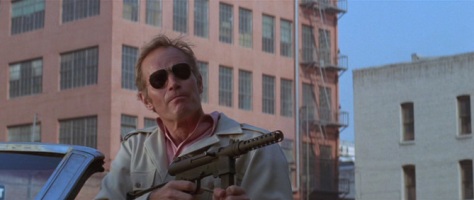
It was adapted for film as “The Last Man on Earth” with Vincent Price in 1964, again as “The Omega Man” in 1971 with Charlton Heston and, more recently, in 2007 with Will Smith.
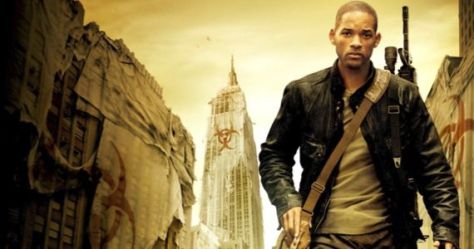
The book may have been about vampires but its main theme was loneliness and there are few better books about that subject. As the main character Neville is alone most of the time, it’s a difficult story to write but Matheson does a great job of keeping the reader engaged with his solitary hero in his nightmare world. “I Am Legend” also served as the direct inspiration for classic zombie movie “Night of the Living Dead”, giving birth to a whole new genre of film, almost as if the vampire pandemic gave birth to zombies.
He was also a successful television writer, penning episodes of “The Alfred Hitchcock Hour” and “Star Trek” as well as numerous western shows.

His 1956 novel “The Shrinking Man” (filmed in 1957 as “The Incredible Shrinking Man”, which Matheson also wrote the screenplay for) has been ripped off by everything from “Honey, I Shrunk The Kids” to last year’s “Ant Man.” It had its New York premiere 60 years ago this week in February 1957. In 2009, “The Incredible Shrinking Man” was placed in the National Film Registry by the Library of Congress, this accolade is only given to films that are “aesthetically, historically or culturally significant.”
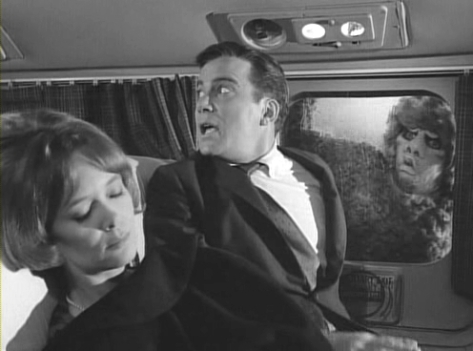
“The Twilight Zone” seemed made for Matheson and another famous story of his, “Nightmare at 20,000 Feet”, was filmed for the show among others. It concerned a nervous flyer (played by William Shatner in the 1963 TV show and John Lithgow in the Twilight Zone movie twenty years later) who is convinced a demon is smashing up the wing of the passenger plane he is on during a vicious thunderstorm. No one believes him, even when he saves the lives of everyone on board by trying to kill the creature and forcing it to flee.


The Simpsons did a parody of this story in one of their Halloween specials where Bart Simpson sees a demon dismantling the wheels of the school bus he’s on. Demonstrating how his stories are so ingrained now in popular culture.
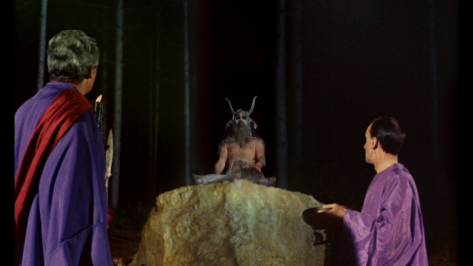
In 1968, he adapted Dennis Wheatley’s novel “The Devil Rides Out” for Britain’s Hammer Horror films. It is one of the best British horror movies ever made and features Christopher Lee in one of his finest roles as a man battling the forces of darkness.
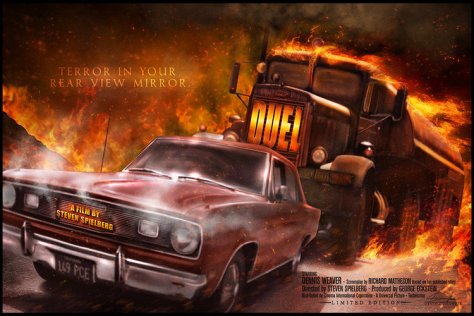
His nerve-shredding TV movie script for “Duel” became Steven Spielberg’s first film in 1971.

Other Matheson novels made into films include “Bid Time Return” which became “Somewhere in Time” starring Christopher Reeve and Jane Seymour (arguably a big influence on “Back To The Future” and “The Terminator”), “What Dreams May Come” with Robin Williams, “Stir of Echoes”, a supernatural horror film starring Kevin Bacon and “Real Steel”, a sci-fi action movie about fighting robots with Hugh Jackman.
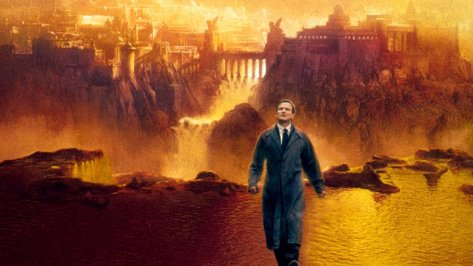
He once said: “I wrote about real people and real circumstances and real neighbourhoods. There was no crypt or castles or H.P. Lovecraft-type environments. They were just about normal people who had something bizarre happening to them in the neighbourhood. I could never write about strange kingdoms. I could never do Harry Potter or anything like that.”
Assessing his career, he said: “I think ‘What Dreams May Come’ is the most important (read effective) book I’ve written. It has caused a number of readers to lose their fear of death, the finest tribute any writer could receive. … Somewhere In Time is my favourite novel.”
His daughter and two sons also became writers.
Richard Matheson died in June 2013. He left behind a significant body of work including dozens of novels, short stories, TV show scripts, TV movies and movies both adapted by him from his own work and adapted by others. Writer Ray Bradbury called him “one of the most important writers of the 20th century.” While Stephen King claimed Matheson was the writer who had influenced him the most. Another writer called Harlan Ellison praised his “supernova lifetime of writing mentioned in the same breath with Poe and Borges.” That is about as good as it gets.
I’ll leave the final word to Mr Matheson: “I hope people are reading my work in the future. I hope I have done more than frightened a couple of generations. I hope I’ve inspired a few people one way or another.” You certainly have, sir, you certainly have.
(“The Vorbing”, my vampire novel inspired by Richard Matheson’s “I Am Legend” is available here)
© Stewart Stafford, 2017. All rights reserved.
Narrative theory is the academic idea begun by the Russian scholars Todorov and Propp and continued later by the American Joseph Campbell, that the same archetypes and story motifs and narrative structures appear repeatedly in fairytales and folktales in every culture.


With Star Wars everywhere in the news this week following the release of Rogue One and the tragic death of Carrie Fisher, let’s take a look at narrative theory through the example of Star Wars Episode IV – A New Hope. It was written and directed by George Lucas and released in 1977. It’s a science fiction film even though it takes from every genre; Arthurian legend (the Jedi knights are similar to King Arthur’s knights of the Round Table, Obi-Wan Kenobi is a Merlin-like figure who gives Luke a laser sword similar to Excalibur), Japanese Kurosawa movie The Hidden Fortress (1958) (Lucas said: “The one thing that really struck me about The Hidden Fortress was the fact that the story was told from the [perspective of] the two lowest characters. I decided that would be a nice way to tell the Star Wars story, which was to take the two lowest characters, as Kurosawa did, and tell the story from their point of view, which in the Star Wars case is the two droids.” Darth Vader’s helmet is also supposed to resemble a Samurai’s.)


Star Wars also evokes American Westerns (Han Solo is dressed exactly like Gary Cooper in High Noon minus the cowboy hat.The raucous, violent canteen is like a Western saloon and the destruction of Luke’s home and family is very like The Searchers) and World War II movies (Darth Vader’s helmet also resembles a Nazi helmet, the Empire’s troops are called Stormtroopers just as Hitler’s were and the dogfights in outer space are like Second World War aerial battles. Lucas even edited World War II dogfight footage into an early rough cut of Star Wars as a guide before the special effects were ready.)


Lucas had tried and failed to secure the rights to make a Flash Gordon movie, yet he retained the opening exposition crawl from the start of the old 1930s Buster Crabbe/Flash Gordon serials for Star Wars.
Here are Propp’s archetypes in Star Wars:
Hero – Luke Skywalker
Donor – Obi-Wan Kenobi gives Luke his lightsaber.
Helper – Han Solo, Chewbacca and the droids
Princess – Leia
Her Father – Anakin Skywalker/Darth Vader
False Hero – There is no obvious false hero in Star Wars – Episode IV. It appears to be Han Solo, who selfishly refuses to take part in the crucial assault on the Death Star but he redeems himself in a last-minute twist by saving Luke’s life and neutralising the threat of Darth Vader which gives Luke time to destroy the Death Star.
Dispatcher – I believe it’s Leia; she puts the distress hologram inside R2-D2. This sends the droid on his mission which reactivates Obi-Wan who activates Luke as the hero.
For me, the structure is this;

Act I – Hidden Fortress meets The Searchers


Act II – Where Eagles Dare (Clint Eastwood and Richard Burton disguise themselves as Nazis to infiltrate a German fortress on a mountaintop just as Han Solo and Luke Skywalker disguise themselves as the enemy to get around the Death Star)

Act III – The Dambusters (Lucas hired British cinematographer Gil Taylor to shoot Star Wars and he had done special effects photography on the 1955 British film The Dam Busters. The assault on the Death Star at the end is a virtual shot-for-shot remake of the bombing of the German dams at the finale of The Dam Busters.)
© Stewart Stafford, 2016. All rights reserved.
Star Wars © Lucasfilm Ltd.

A nightmare inspired Stephen King to write The Shining novel:
“In late September of 1974, [my wife] and I spent a night at a grand old hotel in Estes Park, the Stanley. We were the only guests as it turned out, the following day they were going to close the place down for the winter. Wandering through its corridors, I thought that it seemed the perfect – maybe the archetypal – setting for a ghost story. That night I dreamed of my three-year-old son running through the corridors, looking back over his shoulder, eyes wide, screaming.”

“Jack comes to the hotel psychologically prepared to do its murderous bidding. He doesn’t have very much further to go for his anger and frustration to become completely uncontrollable. He is bitter about his failure as a writer. He is married to a woman for whom he has only contempt. He hates his son. In the hotel, at the mercy of its powerful evil, he is quickly ready to fulfil his dark role.” – Stanley Kubrick
The Shining (1980) begins with epic, sweeping helicopter shots of Jack Torrance (Jack Nicholson) and his family driving through the Rocky Mountains. Its director and co-screenwriter, Stanley Kubrick, was scared of flying and sent his second unit to get the shots. The shots become important later when some of the local legends about Native American burial grounds and the cannibals of the Donner Party are brought into play. They also serve to begin the story wide open before venturing into the interiors of the Overlook Hotel and the minds of Jack Torrance and his psychic son Danny. The epic vistas could be made to seem exciting but the ominous, creepy music lets us know we are entering dark territory.
The Shining at heart is a traditional haunted house movie. However, it defies genre conventions by raising uncomfortable social issues like domestic violence, child abuse and racism, issues which were only starting to be publicly discussed in 1980. This further unsettles the audience. Plus, it has the ghosts interacting physically with the human characters, like when a spirit unlocks the pantry where Wendy has locked Jack and sets him free (some people I saw the film with found that hard to believe and that they were unable to suspend disbelief beyond that point).

Then there is the scene where Jack goes to the forbidden room 237. He sees an attractive, naked young woman emerge from the bathtub and they embrace, only for her to turn into a cackling crone and witch-like figure with a decomposing body. There Kubrick appears to be playing with the psychology of dreams and ageing nightmares.


“I think The Shining uses a…kind of psychological misdirection to forestall the realization that the supernatural events are actually happening.” – Stanley Kubrick

There was a recent documentary about The Shining appropriately titled Room 237. In voice-over, people we never see expound on their theories as to what Kubrick’s The Shining is really about. One person thinks it’s a metaphor for the genocide of Native Americans by white settlers. Another believes it to be about the Nazi Holocaust against the Jews of Europe. Someone else sees the Apollo 11 jumper Jack’s son Danny is wearing as proof that Kubrick faked the Apollo moon landings for NASA in 1969 in a television studio. There is a fascinating section of the documentary that explains that Kubrick was getting very interested in subliminal imagery at the time and that The Shining is loaded with signifiers of this type. A movie that began as a novelist’s nightmare and that is presented in such a consistently surreal fashion is, like a dream itself, open to many interpretations.

There was always dark humour running through the work of Stanley Kubrick, most notably in Dr Strangelove or How I Learned to Stop Worrying and Love the Bomb (1964). Kubrick also loved his actors to improvise and these elements came together in the The Shining when Jack Nicholson came up with the line: “Here’s Johnny!” A wicked parody of the line that introduced Johnny Carson on his chat show, it became the most famous line in the movie, was used as the poster image and is one of the most famous lines in film history.



When Jack Torrance is waiting for his interview in the reception area of the Overlook Hotel at the start of the film, he’s reading an issue of Playgirl magazine that has an article about incest in it. The Shining could be seen as an Oedipal tale with the son killing the father (Danny traps his father in the maze where he gets lost and freezes to death, Danny carefully retraces his footsteps and saves himself) so he can have his mother all to himself in their new life together.

© Stewart Stafford, 2016. All rights reserved.
If you’re a generous person who believes this writer should be paid for his hard work, you may donate here.
To read more of this author’s work, check out his short story Nightfall and novel The Vorbing.
Where do you start your story? A key question and one of hundreds if not thousands to be answered when writing and publishing a book. Do you start when your character is born or before? When they are a child? A teenager? An adult? When they get married? When they are old? Do you start at the point of death or after and tell the story in flashback?
If you were telling the story of your life, where would you choose to start and why? Looking at your characters in the same way and treating their lives as real can be hugely beneficial. When you start treating them seriously, they become more realistic to you and hopefully your readers.
When a potential reader opens your book, how do you pique their interest? Your first sentence is crucial. The point you choose to start the story will determine that first sentence. The whole structure is like a line of dominoes (no, not the pizza place); set the first one right and the rest should stand. Get it wrong and they all could topple.

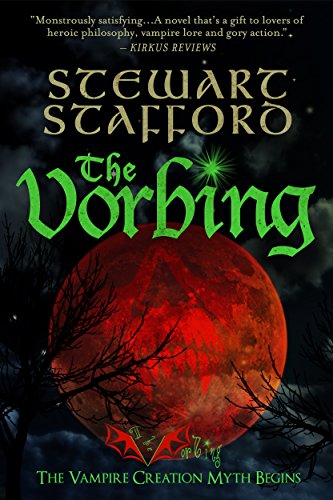
It took me many years to publish my book The Vorbing and, during that time, I wrote many different versions of it. I went through a city map of blind alleys but it taught me what worked and didn’t work each time and sharpened the story. When the time came to pull all the strands together, I could use all the best bits from all the various drafts to come up with a kind of “greatest hits” version of the story. All those ideas gave the whole thing a fast pace and fresh perspective. I won’t have that luxury on book two, but such is the challenge of writing.
This is where a fresh pair of (preferably experienced) eyes on your work can pinpoint a loss of initial focus. Even if you need to lose earlier material, you can use it later in the story or in a sequel or even just as backstory to help you know your characters better. No piece of writing is ever really wasted. You can cannibalize it later or even combine bits to create a new story (Anne Rice was writing a book set in Atlantis and hit a dead end, so she put her vampire Lestat into the mix and, hey presto, got a new Vampire Chronicles book out of it – Prince Lestat and the Realms of Atlantis.)
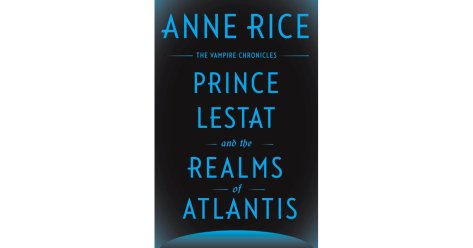
That old cliche “you never get a second chance to make a first impression” is doubly true for writers, especially in the internet age. If someone is viewing a preview of your book using the “Look Inside” option on Amazon, that mouse button is right at their fingertips and they are ready to click off if you fail to hook them. So think carefully about that first sentence. Be original. Be surprising, but be true to your characters, your story and yourself above all.
© Stewart Stafford, 2016. All rights reserved.

Imaginary things take time to write. Fantasy and horror and, to a lesser extent, science fiction can be among the toughest genres to write as they are works of pure imagination. Science fiction can be slightly researched and current trends can be followed to their logical conclusion. Educated guesses can be made as to what direction science will go in. Fantasy and horror mostly comprise world-building from scratch and, depending on the writer, the concepts can take time to generate.
Added to that, readers want new product yesterday. They’ve become ultra-impatient in the internet age. Some of them even refuse to read the first book in a series as they are unable to wait for the other books to be written and published. “Am I going to have to wait years for you to finish your Vorbing trilogy? I’m an impatient bitch,” one of my readers helpfully explained to me.
In their book, The Neuroscience of Clinical Psychiatry: The Pathophysiology of Behavior and Mental Illness, Edmund S. Higgins and Mark S. George note: “People who can delay gratification and control their impulses appear to achieve more in the long run. Attention and impulsivity are opposite sides of the same coin.” This is especially true of all those internet babies who have grown up in the technological age. So the internet is a bit like Brexit; we don’t know what the full implications of its arrival are yet.

The web has its advantages. It’s a phenomenal communication tool. Twitter has definitely made me think faster and streamline messages better, that is certain. As a way of quickly disseminating a message or a product worldwide immediately, the web takes some beating. The net is like a giant synthetic brain our thought patterns are connected to (a strength and a weakness that can be exploited). There are concerns over privacy and who is doing what with our data and those worries will only increase as time goes on.
Back to the writing. This awareness of the disintegration of attention spans has unquestionably changed both the method and style I employ when writing books. I started writing my first book when the internet was in its infancy. I was able to remain in the world I had created all day interacting with my characters. I was totally immersed in it and wouldn’t notice hours passing. Now social media, that great thief of time, eats up chunks of my day without me noticing hours passing. I mostly interact online with people I don’t know instead of my characters. I’m totally immersed in the internet. Writing is done now in feverish bursts to meet my daily word count so I can get back online. Experience has enabled me to do much more in less time though. I no longer need to spend all day going down blind alleys trying to find myself creatively. So perhaps there is no damage done there.
There are writers who have given up social media for a month to get books out there. I’d be concerned about losing half my hard-earned followers. You can’t expect people to continue following you if you’re offline for weeks. Especially if you’re a self-published writer dependent on social media to market your books. It appears to be a 21st-century Faustian pact with the web.
Then there is the pace of the novel itself. I am only too aware that if you fail to hold the attention of your readers, social media is tickling their ears non-stop to woo them away. So they’re dealing with getting their electronic fix too (especially if they’re consuming your book on an e-reader or smartphone app that’s connected to the internet and the ejector seat button for your novel is half an inch away). The pacing of a novel has to match the online frenzy going on out there or you’re toast. Then again, if the flour is going rotten to begin with, maybe the quality of the toast isn’t so important these days. We shall see.
So the internet has rewired our brains, changed our expectations and how books are written, edited, sold and read (or not as the case may be). What form will books take in 2026? 2036? 2066? Will we be taking downloads directly into our brains as in a William Gibson cyberpunk novel? I have a saying: “The possible is just the impossible that we’ve come to accept.” It will happen.
My novel “The Vorbing” is available here
© Stewart Stafford, 2016. All rights reserved.
Wuthering Heights, the only novel by author Emily Bronte before her death at 30, has been highly influential on popular culture. It was published in 1847, the year of the great Famine in Ireland, Bram Stoker’s birth and exactly 50 years before he published Dracula.

The book begins with the narrator Lockwood coming to stay at Wuthering Heights. He is given the former room of Catherine Earnshaw. During the night, he dreams that the ghost of Catherine or Cathy Earnshaw comes to the window, grabs his arm and begs to be let inside. Lockwood informs Heathcliff, the landlord, who opens the window to let the spirit enter but none appears. This supernatural appearance at the window is similar to how Dracula gains entry to the bedrooms of his victims, except he uses his mental, physical and/or erotic power to get in. In some vampire stories, it is necessary to invite a vampire in for them to gain access. It would appear to have at least partially originated in this standout scene from Wuthering Heights.
The story of Wuthering Heights is then told in flashback (Stoker also uses narrators to tell the story of Dracula but in the form of letters and journal entries). Heathcliff as a child is discovered wandering homeless by Mr Earnshaw on his trip to Liverpool. (Liverpool is a port and, as with Dracula, Heathcliff seems to have arrived in England by ship although that is never stated in the book. Judging by the ethnic description of him though and the location where he was found, it is a strong possibility.) The boy is described as “a dark-skinned gypsy in aspect.” Earnshaw names him Heathcliff and brings him home where his presence stirs up jealousy from Earnshaw’s son Hindley and infatuation from his daughter Cathy.
Heathcliff, like Dracula, is the mysterious, dark foreigner bringing his obsessive, destructive and ultimately lethal love to England’s stuffy upper classes. The theme repeatedly used in Wuthering Heights about eternal love even after death was one Bram Stoker would return to in Dracula five decades later.
Although they appear destined to be together, Cathy and Heathcliff grow up and marry other people and their relationship turns jealously masochistic with fatal consequences. Only after their deaths do they appear to fulfill their destiny and become soulmates at last.


Dracula author Bram Stoker was the manager of actor Sir Henry Irving. Irving was a fearsome figure who dominated Stoker. Many believe him to be the inspiration for Stoker’s vampire count.

Not only did Irving serve as inspiration for Bram Stoker but, indirectly, for actor Laurence Olivier who played both Heathcliff in Wuthering Heights and Van Helsing in Dracula onscreen.

When stuck for ideas on how to play Shakespeare’s Richard III in the movie he was directing, Olivier said: ‘I’d always heard imitations of old actors imitating Henry Irving. And so I did, right away, an imitation of these old actors imitating Henry Irving’s voice. That’s why I took that sort of rather narrow vocal address.’


Cathy’s ghost appearing at the window echoes the victory over death and return from the grave in vampire lore. Stephen King’s 1975 novel Salem’s Lot was inspired by Dracula. One night over supper, King mused what would happen if Dracula reappeared in the-then 20th century. Again, King makes the connection between Dracula and Wuthering Heights explicit when dead boy Ralphie Glick comes to his brother’s window after being preyed upon by the master vampire in the town. He also wishes to be let in as Cathy does.

In 1978, Kate Bush reached number one in the UK charts with her song Wuthering Heights. It was directly inspired by a 1967 BBC adaptation of Emily Bronte’s novel that Kate Bush saw when she was 18 (she even shares the same birthday as Emily Bronte). Bush specifically chose Cathy’s appearance at the window in the book to structure the song around and wrote from her perspective: “Heathcliff! It’s me, your Cathy, I’ve come home. So co-o-o-old, let me in at your window.” She definitely played up the scary, supernatural side of the scene and wasn’t afraid to potentially frighten away record buyers. Her bravery paid off with her first and only number one to date.
Kate Bush’s mother was from Ireland. With her high-pitched wailing and scary eyes in the video, it’s tempting to imagine Kate Bush shifting the setting of Wuthering Heights to Ireland and the ghost of Cathy becoming a Banshee coming in from a misty bog in the Irish countryside. Journalist Clive James famously stated in 1978 that he wasn’t sure ‘whether Kate Bush is a genius or a headcase, but she is definitely something else.’ Her ethereal, otherworldly performance spooked some people just as the original scene in Emily Bronte’s book had.
Here are the two very interesting versions of her Wuthering Heights videos:
It just demonstrates how, when an author hits upon a striking and powerful image, it can permeate down consciously and unconsciously through many forms of artistic expression for decades and even centuries to come.
© Stewart Stafford, 2016. All rights reserved.
If you’re a generous person who believes writers should be paid for their work, you may donate here.
To read more of this author’s work, check out his short story Nightfall and novel The Vorbing.
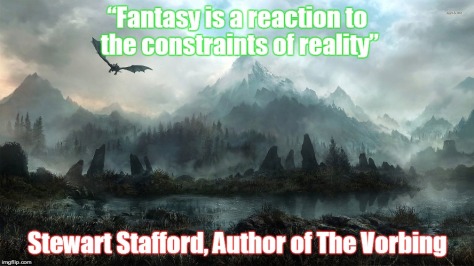
Allow me to elaborate on my quote, dear readers. In the Second World war, Britain and Germany were gleefully bombing each other’s major cities into oblivion day and night. In the myopia of war, they thought they were engaged in a conflict to strengthen themselves, but were, in fact, destroying each other as major world powers. This created a vacuum into which stepped the new superpowers – the United States and the Soviet Union.
In the aftermath of the war, Britain was devastated physically, financially and mentally. Rationing was still in force and luxuries were unheard of for a whole generation of children. The war was before their time but the impact and implications of it were a daily fact of life. Ruined areas called bomb sites still pockmarked the land and the new kids played on them, including a young David Bowie.
Bowie’s biographer Paul Trynka kicks off his excellent book Starman with this illustration of grim post-war austerity from Peter Prickett: “Everything seemed grey. We wore short grey flannel trousers of a thick and rough material, grey socks and grey shirts. The roads were grey, the prefabs were grey and the bomb sites seemed to be made of grey rubble.”
Behold the constraints of reality! Glam Rock in the 70s was going to be the antithesis of all that childhood drabness and deprivation. First though, Tolkien would unleash the beast that was The Lord of the Rings. Despite being written in stages between 1937 and 1949, three volumes were published over the course of a year between 1954 and 1955 (The Fellowship of the Ring, The Two Towers and the Return of the king). There was a sudden glut of Tolkien product in the marketplace at just the right time. The books were manna from Heaven for a generation starved of good food, new ideas and hope. For the first time, they had in their hands an affordable escape and a template for a way out of their difficult situations. It was like the scene in the Wizard of Oz where the world goes from monochrome to eye-popping technicolor as Dorothy reaches Oz. John Lennon was one of many British kids who became a fan of Tolkien’s.

The Beatles turned everything on its head when they shot to fame in 1962. As well as topping the charts with monster hits on both sides of the Atlantic, they also made some remarkable films including A Hard Day’s Night, Help and the surreal, Pythonesque Magical Mystery Tour. Kicking around for ideas for a new Fab Four flick, John Lennon suggested an adaptation of Tolkien’s The Lord of the Rings.
Peter Jackson directed both The Hobbit and Lord of the Rings trilogies. In 2014, he said “The Beatles once approached Stanley Kubrick to do The Lord Of The Rings and he said no. I actually spoke about this with Paul McCartney. He confirmed it. I’d heard rumors that it was going to be their next film after Help.”
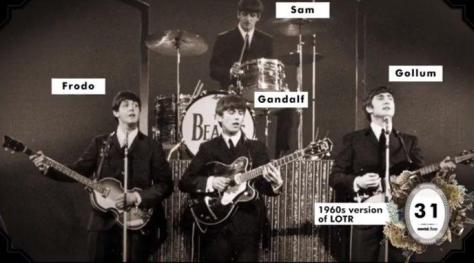
It wasn’t just Kubrick who rejected The Beatles: “It was something John was driving, and J.R.R. Tolkien still had the film rights at that stage, but he didn’t like the idea of the Beatles doing it. So he killed it,” Jackson added.

Lennon had published two books himself, A Spaniard In The Works and In His Own Write, his love of wordplay being evident in the titles. Lennon was fan of Lewis Carroll as well as Tolkien and his writing has been compared to Carroll’s, particularly I Am The Walrus.

It is arguable that many of the prog rock concept albums of the 70s were an attempt to transfer Tolkien’s epic fantasy imagery to the album format. Rick Wakeman played piano on Bowie’s Life On Mars and was the keyboard player with Yes. Wakeman did a 70s concert at an ice rink with skaters playing knights on horseback jousting to the music he was playing. He admitted recently that he had gone too far but it was excess-all-areas in the 70s.

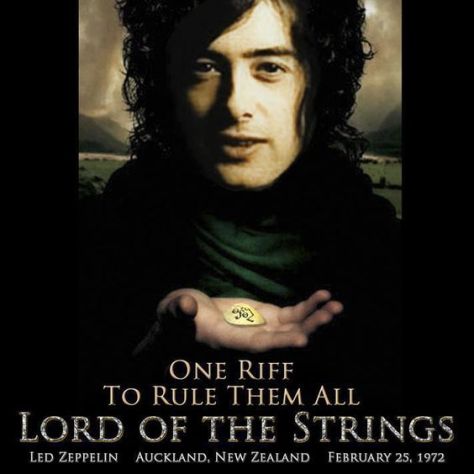
Robert Plant of Led Zeppelin was a serious Tolkien nerd, liberally sprinkling references to the books in his songs. Take these lines from Zeppelin’s Ramble On: “Twas in the darkest depths of Mordor, I met a girl so fair. But Gollum and the evil one crept up and slipped away with her.”
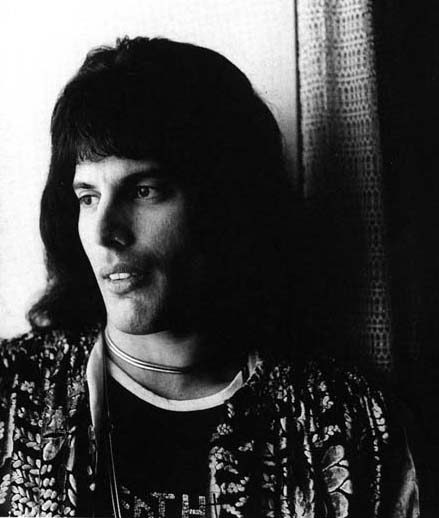
Queen, in turn, were big fans of Led Zeppelin. They played Zeppelin’s Immigrant Song during soundchecks and Plant turned up at The Freddie Mercury Tribute Concert in 1992 to perform Innuendo and Crazy Little Thing Called Love. It’s possible that Freddie and the boys imbibed some of Zeppelin’s Tolkien imagery by osmosis. Seven Seas of Rhye was Queen’s first hit. It came out in 1974 and was written by Freddie Mercury. Rhye was a fantasy world that Freddie had created with his sister Kashmira. Freddie sings of “the mighty Titan and his troubadours” in Seven Seas of Rhye. On other Queen albums there was “Ogre Battle” and “Fairy Feller’s Master-Stroke.” The imagery of Brian May’s The Prophet’s Song on A Night At The Opera is very Tolkienesque, although the images came to him in a dream. Queen would also go on to do the music for fantasy films like Highlander and Flash Gordon.
Tolkien was probably horrified by the bands and music he inspired but that would have been a typical reaction from his generation. None of it was intended for him. He was unable to foresee the consequences of publishing his books but it is interesting to see how one creative act can inspire many similar and dissimilar ones, spreading out like ripples in a pond. We pass the torch of inspiration down the generations, it is not ours to keep but ours to maintain and pass on.
© Stewart Stafford, 2016. All rights reserved.
If you’re a generous person who believes this writer should be paid for his hard work, you may donate here.
To read more of this author’s work, check out his short story Nightfall and novel The Vorbing.

We’ve all heard about the self-publishing revolution in books in the last few years with Amazon Kindle and all the other e-readers and websites. I was watching a BBC documentary called ArtsNight last week and the presenter made an interesting point: punk rock bands were the first indie authors. They learned their three chords, set up their own bands and, in some cases, record labels and self-published their own music. They took control of their own destinies in the same way novelists did recently. Even the punk fanzines were do-it-yourself wonders; stapled together, photocopied and distributed through record stores, mailing lists, by hand and by word-of-mouth in those pre-pre-internet days.
It’s a very cogent analogy. As with the self-published books, some of the DIY punk music that was put out was awful, but some of it has reached classic status in hindsight. Self-publishing until recently was called “vanity publishing,” but writers were no longer prepared to sit on their hands waiting months for a form rejection letter. They too seized their own destinies through the technology that was around them and turned the publishing industry on its head.
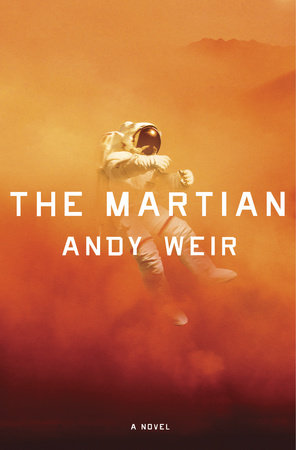
Movies are even being made from self-published books for the first time like Ridley Scott’s The Martian starring Matt Damon and a future fantasy film that 20th Century Fox has purchased the rights to called Fall of Gods (even after that movie deal was signed, the book was taken down from Amazon due to formatting issues, the bane of indie authors everywhere. Luckily, it didn’t impact on the movie deal and Fox could see the merit of what was there despite the flaws.)

Punks and indie authors are strange bedfellows indeed, but both groups were and are pioneers in their fields. While the punk movement didn’t manage to overthrow the mainstream in the same way hippies in the previous generation hadn’t, they democratised their art form and showed others what was possible with self-belief and a little effort. Just as indie authors did. The shockwaves of the indie author revolution are still spreading out from the epicentre and nobody really knows where it will stop or what comes next. The most important thing is that books that would have gathered dust in drawers and on hard drives and memory sticks are now finding a worldwide audience. That can only be a good thing.
© Stewart Stafford, 2016. All rights reserved.